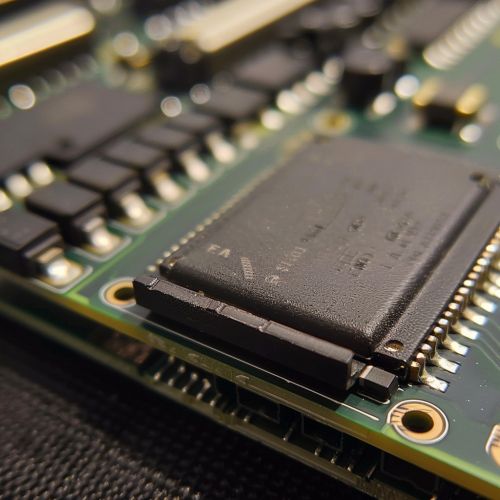Random Access Memory
Overview
Random Access Memory (RAM) is a type of computer memory that can be read from and written to in any order. This is in contrast to other data storage devices, such as hard drives, which require data to be read in a specific sequence. RAM is a key component of most computing devices, including desktop and laptop computers, smartphones, and tablets.


History
The concept of Random Access Memory dates back to the early days of computing. The first type of RAM was magnetic-core memory, which was used in many early computers from the 1950s to the 1970s. This type of memory used tiny magnetic rings, or cores, through which wires were threaded to store information. Magnetic-core memory was eventually replaced by semiconductor memory, which is the type of RAM used in most modern devices.
Types of RAM
There are several different types of RAM, each with its own characteristics and uses.
Dynamic RAM (DRAM)
Dynamic RAM (DRAM) is the most common type of RAM used in personal computers. It stores each bit of data in a separate capacitor within an integrated circuit. The level of charge in each capacitor represents a 0 or 1 in binary code. However, the charge in the capacitors slowly leaks away, so the information stored in DRAM must be refreshed regularly to prevent data loss.
Static RAM (SRAM)
Static RAM (SRAM) is a type of RAM that uses flip-flop circuits to store data. Unlike DRAM, SRAM does not need to be refreshed to maintain its data. This makes it faster and more reliable than DRAM, but it is also more expensive to produce. As a result, SRAM is typically used in small amounts in parts of the computer where speed is crucial, such as the CPU cache.
Synchronous Dynamic RAM (SDRAM)
Synchronous Dynamic RAM (SDRAM) is a type of DRAM that is synchronized with the clock speed of the computer. This allows it to operate more efficiently than traditional DRAM, which operates independently of the clock speed. SDRAM is commonly used in desktop and laptop computers.
Function
RAM is used to store data that is being actively used or processed by the computer. When a program is run, the data it needs to operate is loaded into RAM. This is because reading data from RAM is much faster than reading it from other types of storage, such as a hard drive or SSD. The more RAM a computer has, the more data it can process at once, which can significantly improve performance.
Importance
RAM is a crucial component of any computing device. Without it, computers would not be able to run multiple programs at once, or quickly access and process data. The amount of RAM in a device can significantly impact its performance. For example, a computer with a small amount of RAM may struggle to run multiple applications at the same time, or to run complex software. On the other hand, a computer with a large amount of RAM can handle these tasks more easily.
